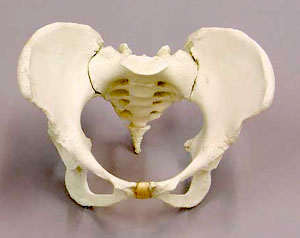

~ “The children desire freedom! And every particle of their being from their Source says, ‘You are free. You are so free, that every thought you offer, the entire Universe jumps to respond to it.’ And so, to take that kind of knowledge and try to confine it in any way, defies the Laws of the Universe. You must allow your children to be free, because the entire Universe is set up to accommodate that. And anything you do to the contrary will only bring you regret. You cannot contain those that cannot be contained. It defies Law.” – Abraham, excerpted from the workshop in Atlanta, GA on Sunday, September 19th, 1999 #400
~ “The little ones still remember how to use the power of their imagination. They are still engaged in the utilization of their imagination — that is one of the reasons that keeps them so exhilarated.” – Abraham, excerpted from the workshop in Spokane, WA on Wednesday, July 7th, 1999 # 394.
~ “Babies Are Thinking and Attracting Before They Are Speaking… Even though you are only months old in your physical body, you are a very old and wise creator focused in that baby’s body. And you came with powerful intentions to experience contrast and to launch clear rockets of desire into your Vibrational Reality for the purpose of expansion. People often assume that because a child is not yet offering words, the child could not be the creator of its own experience, but it is our promise to you that no one else is creating your experience. Children emanate Vibrations which are the reason for what they attract – even from their time of birth.” – Excerpted from the book, The Vortex, Where the Law of Attraction Assembles All Cooperative Relationships # 333.
~ “Parents don’t want their children to make the wrong decisions, so they don’t allow them to make the decision. And then the child becomes dependent, and then the parent resents that, and it gets off into a blameful thing early on. If you are encouraging children to do all that they can do — and not squelching the natural eagerness that is within them, so that they can shine and thrive and show you and themselves how good they are at adapting to physical experience — then everyone wins.” – Abraham, excerpted from the workshop in Dallas, TX on Saturday, March 13th, 1999 # 393.
~ “If we had a child, or anyone, and we caught them doing something inappropriate, we would not amplify it with our words. We would identify what it is we do not want, and then out of it would come the rocket of desire of what we do want, and then we would just visualize, visualize, visualize, until we find peace within our vision. When you make someone and their action the heart of a vision that you’ve spent time on — your relationship improves, your experience is better, and they receive the benefit of the experience. But if you catch them, and see them, and worry about it, and put mechanisms in place to prevent it, now you have not only amplified it, you have now made a commitment that is hooking you both into that, until usually it gets big enough that you break apart, and then you attract others to fulfill that role.” – Abraham, excerpted from the workshop in Chicago, IL on Sunday, April 25th, 1999 #588.
~ “The reason the grandchildren will benefit by the launched rockets that you’ve set forth; is because they’re born with no resistance to the rockets of desires that you’ve launched forth… You’ve seen those little ones on computers? They have no problem with that. They were born with computers in their life; they’re born cable-ready. They’re already up to speed with what you’ve launched into the vibrational future. And that’s one of the reasons that it’s nice when the old ones croak and the new ones come in, because it sort of dilutes the resistance factor that’s going on on this planet.” – Abraham, excerpted from the workshop in Tarrytown, NY on Saturday, May 14th, 2005 #504.
~ “Relative to our children or any children with whom we would interact, our one dominant intention would be to give them a conscious understanding of how powerful and important and valuable and perfect they are. Every word that would come out of our mouths would be a word that would be offered with the desire to help this individual know that they are powerful. It would be a word of empowerment. We would set the Tone for upliftment and understand that everything will gravitate to that Tone if we would maintain it consistently.” – Abraham, excerpted from the workshop in Chicago, IL on Saturday, July 19th, 1997 #469.
~ “Child of mine, I will never do for you that which I know you can do for yourself. I will never rob you of an opportunity to show yourself your ability and talent. I will see you at all times as the capable, effective, powerful creator that you’ve come forth to be. And I will stand back as your most avid cheerleading section. But I will not do for you that which you have intended to do for yourself. Anything you need from me, ask. I’m always here to compliment or assist. I am here to encourage your growth, not to justify my experience through you.” – Abraham, excerpted from the workshop in Seattle, WA on Sunday, July 4th, 1999 #453.
~ “Nothing is more debilitating than to care about something you can’t do anything about. And you can’t do anything about your adult children. You can want better for them, and maybe even begin to provide something for them, but in the long run, you cannot do anything about someone else’s vibration other than hold them in the best light you can, mentally, and then project that to them. And sometimes, distance makes that much more possible than being up close to them.” – Abraham, excerpted from the workshop in Ashland, OR on Saturday, July 19th, 2003 #437.
~ “Children coming forth today have a greater capacity to deal with the greater variety of information that is coming forward than you did. They deliberately are coming forth into this environment where there is more to contemplate. This generation gap that you are talking about, it has ever been thus. Each new generation, every new individual, that comes forth, is coming with you having prepared a different platform for them to proceed from. There is this thing that gets in the way of that that says, ‘I’m the parent. I got here first. I know more than you do.’ From the children’s perspective, and from the purity of their Nonphysical Perspective, what they are saying is, ‘You’re the parent. You got here first. You prepared a platform that I am leaping off from — and my leap will be beyond anything that you have ever known.'” – Abraham, excerpted from the workshop in San Rafael, CA on Saturday, February 27th, 1999 #395.
 ~ “The child is thinking, and receiving vibrational thought from you on the day that he enters your environment. That is the reason that beliefs are transmitted so easily from parent to child, from parent to child, from parent to child. The child is vibrationally receiving your fears, your beliefs, even without your spoken word… If you want to do that which is of greatest value for your child, give thought only to that which you want, and your child will receive only those wanted thoughts.” Abraham, excerpted from “The Law of Attraction, The Basics of the Teachings of Abraham” #385.
~ “The child is thinking, and receiving vibrational thought from you on the day that he enters your environment. That is the reason that beliefs are transmitted so easily from parent to child, from parent to child, from parent to child. The child is vibrationally receiving your fears, your beliefs, even without your spoken word… If you want to do that which is of greatest value for your child, give thought only to that which you want, and your child will receive only those wanted thoughts.” Abraham, excerpted from “The Law of Attraction, The Basics of the Teachings of Abraham” #385.
 ~ “The most important thing that you can teach your children is that wWell-being abounds. And that Well-being is naturally flowing to them. And that if they will relax and reach for thoughts that feel good, and do their best to appreciate, then they will be less likely to keep the Well-being away, and more likely to allow it to flow into their experience. Teach them the Art of allowing.” – Abraham, excerpted from the workshop in Milwaukee, WI on Wednesday, July 5th, 2000 #363.
~ “The most important thing that you can teach your children is that wWell-being abounds. And that Well-being is naturally flowing to them. And that if they will relax and reach for thoughts that feel good, and do their best to appreciate, then they will be less likely to keep the Well-being away, and more likely to allow it to flow into their experience. Teach them the Art of allowing.” – Abraham, excerpted from the workshop in Milwaukee, WI on Wednesday, July 5th, 2000 #363.
~ “Parents can’t choose the mates of their children or the behavior of their children. You actually can’t choose anything for your children without disempowering them.” – Abraham, excerpted from the workshop in Syracuse, NY on Thursday, October 17th, 1996 #347.
~ “When a child has a dream and a parent says, “It’s not financially feasible; you can’t make a living at that; don’t do it,” we say to the child, run away from home… You must follow your dream. You will never be joyful if you don’t. Your dream may change, but you’ve got to stay after your dreams. You have to.” – Abraham, excerpted from the workshop in Asheville, NC on Sunday, May 1st, 2005 #330.”Most people don’t think that new-born children could be the Creator of their own reality because they are not even talking yet. But the Universe is not responding to your language, anyway. The Universe is responding to your vibration — and your vibration is about the way you feel.” – Excerpted from the workshop in Seattle, WA on Saturday, June 20th, 1998. Jerry and Esther Hicks (Abraham).
~ “Your child is naturally joyful. Your child is naturally tuned in to Source Energy. And as he is diving through and digging through contrast, it is natural that there would be some things that might disconnect him. Just don’t let his disconnection then inflame your disconnection. Many parents have discovered that their children, for the most part, feel good when they do — and the ornerier you are, usually the ornerier your children are. They are a strong reflection of the way you are feeling much of the time.” – Excerpted from the workshop in San Antonio, TX on Saturday, January 26th, 2002. Jerry and Esther Hicks (Abraham).
~ “If you encourage your children to stay connected to Source Energy, they will remain clear-minded; they will remain optimistic; they will remain enthusiastic. They will remain balanced; they will remain flexible. They will remain in a state of grace. They will remain in a state of Well-Being. And they will make wonderful choices.” – Excerpted from the workshop in Philadelphia, PA on Thursday, May 12th, 2005. Jerry and Esther Hicks (Abraham).
~ “The little ones still remember how to use the power of their imagination. They are still engaged in the utilization of their imagination — that is one of the reasons that keeps them so exhilarated.” – Excerpted from the workshop in Spokane, WA on Wednesday, July 7th, 1999. Jerry and Esther Hicks (Abraham).
~ “The most significant thing for a parent to contribute to anyone, is their own Connection and their own stability. An effective parent is a happy parent. An effective parent is a parent who laughs easily and often, and who doesn’t take things so seriously.” – Excerpted from the workshop in Albany, NY on Monday, October 1st, 2001. Jerry and Esther Hicks (Abraham).



~ “Life is a flame that is always burning itself out, but it catches fire again every time a child is born.” – George Bernard Shaw
~ “The question is, ‘Well, what about the little ones? What about the (unhealthy) babies?’ And we say they’ve been exposed to a vibration, even in the womb, that caused them to disallow the Well-being that would have been there otherwise. But once they are born, no matter what their disability, if they could be encouraged to the thought that would allow it, then, even after the body is fully formed, it could be regenerated into something that is well.” – Abraham, excerpted from the workshop in Ashland, OR on Tuesday, May 16th, 2000).
~ “There are three reasons for breast-feeding: the milk is always at the right temperature; it comes in attractive containers; and the cat can’t get it.” – Irena Chalmers
~ “Parents often think that they are here to guide the little ones. When – in reality – the little ones come forth with clarity to guide you.” – Abraham, excerpted from the workshop in Orlando, FL on Saturday, February 15th, 1997.
~ “A baby is something you carry inside you for nine months, in your arms for three years and in your heart till the day you die.” – Mary Mason
~ ”A woman in harmony with her spirit is like a river flowing. She goes where she will without pretense and arrives at her destination, prepared to be herself and only herself.” – Maya Angelou
~ “Who you are and what you know when you are born is everything that you need to know to thrive. You are born with a sense of self and a sense of wanting self to feel good, and the mechanisms to bring it about.” Abraham, excerpted from the workshop in Kansas City, KS on Wednesday, September 17th, 2003.



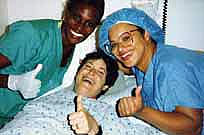
 1. October 2, 1993 at 12:22 a.m., an 8 pound 14 ounce beautiful baby girl, Ariella Renee Garmaise-Schlossberg, her parents Judy and Boris, medical caregiver, Dr. Juanita Jenyons marked the first successful water birth at Roosevelt Hospital.
1. October 2, 1993 at 12:22 a.m., an 8 pound 14 ounce beautiful baby girl, Ariella Renee Garmaise-Schlossberg, her parents Judy and Boris, medical caregiver, Dr. Juanita Jenyons marked the first successful water birth at Roosevelt Hospital. history presented itself in the first United States, documented hospital frank breech underwater birth. The courageous parents of newborn, Damon, are Stacie Teele and Dan Varrichione. Dr. Gae Rodkey was the medical caregiver.
history presented itself in the first United States, documented hospital frank breech underwater birth. The courageous parents of newborn, Damon, are Stacie Teele and Dan Varrichione. Dr. Gae Rodkey was the medical caregiver. 4. Come July 7, 1994, Janis Enzenbacher MD, chose water as a labor and birth tool for the underwater birthing of her daughter Eva Liana, entering the world at 11:11 pm with Dr. Rodkey as the attending physician and Isadora Guggenheim as the attending Labor Support Doula and Massage Therapist.
4. Come July 7, 1994, Janis Enzenbacher MD, chose water as a labor and birth tool for the underwater birthing of her daughter Eva Liana, entering the world at 11:11 pm with Dr. Rodkey as the attending physician and Isadora Guggenheim as the attending Labor Support Doula and Massage Therapist. ward in Roosevelt Hospital. The OB ward no longer allows parents to bring in their portable tubs. The birth center has 3 rooms with 3 tubs to labor, but not to birth in. It is my hope that eventually the birth center will open its doors to the water birth option as well.
ward in Roosevelt Hospital. The OB ward no longer allows parents to bring in their portable tubs. The birth center has 3 rooms with 3 tubs to labor, but not to birth in. It is my hope that eventually the birth center will open its doors to the water birth option as well.

 When I asked the father why he chose to attend the labor and birth of his partner, the responses were uplifting. “Why not?” said a new daddy, “It’s my child as well. To me it was a moment getting to know and get closer to my wife. I can assure you, it did. It took the relationship to another level. Relationships are a collection of experiences and it’s brought us closer together. Forget the candlelight dinners guys, you can’t compare it and it may happen only once or twice in your life. Don’t miss it.”
When I asked the father why he chose to attend the labor and birth of his partner, the responses were uplifting. “Why not?” said a new daddy, “It’s my child as well. To me it was a moment getting to know and get closer to my wife. I can assure you, it did. It took the relationship to another level. Relationships are a collection of experiences and it’s brought us closer together. Forget the candlelight dinners guys, you can’t compare it and it may happen only once or twice in your life. Don’t miss it.”

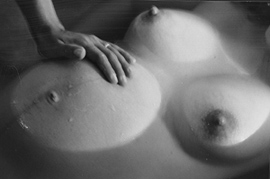
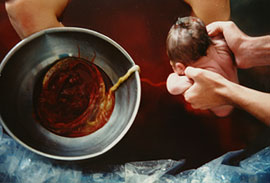

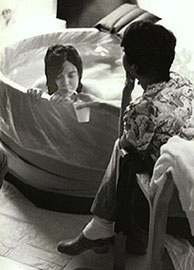 If you are fortunate enough to be invited into the OR in a hospital,
If you are fortunate enough to be invited into the OR in a hospital,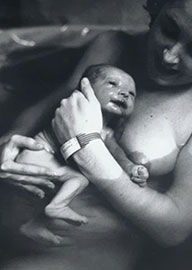
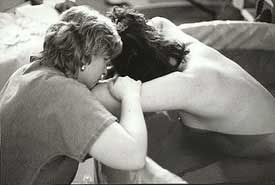





 ~
~ When one takes rolaids, it is COUNTER PRODUCTIVE to the absorption of the iron in the body. Rolaids is an ANTACID, (not acidic) and you NEED acid to absorb the iron in your body. So, you are just canceling out the iron supplement each time a rolaid is taken. It doesn’t matter if one takes one or ten…IT IS NOT GOOD! Research shows if a pregnant woman has to choose between chalk and rolaids, the more favorable choice is the chalk. It doesn’t have the antacid element to it. STOP rolaids immediately if your doctor has suggested this as a solution away from the chalk.
When one takes rolaids, it is COUNTER PRODUCTIVE to the absorption of the iron in the body. Rolaids is an ANTACID, (not acidic) and you NEED acid to absorb the iron in your body. So, you are just canceling out the iron supplement each time a rolaid is taken. It doesn’t matter if one takes one or ten…IT IS NOT GOOD! Research shows if a pregnant woman has to choose between chalk and rolaids, the more favorable choice is the chalk. It doesn’t have the antacid element to it. STOP rolaids immediately if your doctor has suggested this as a solution away from the chalk. Floradix is a liquid formula that will help to enhance the iron absorbtion in one’s body when eating iron rich foods.
Floradix is a liquid formula that will help to enhance the iron absorbtion in one’s body when eating iron rich foods.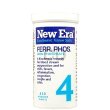 1. Ferrous Phosphate: 6X or 12X strength, take 1-4 times per day, 4 pellets. This very useful cell salt is known as the “oxygen carrier”. It has the ability to carry oxygen to all the cells of the body for use in conversion to energy.
1. Ferrous Phosphate: 6X or 12X strength, take 1-4 times per day, 4 pellets. This very useful cell salt is known as the “oxygen carrier”. It has the ability to carry oxygen to all the cells of the body for use in conversion to energy. The 12 Tissue/Cell Salt Combination As the name implies, this is a combination of all 12 salts in a single tablet. This combination can be used daily in much the same way as you would take a vitamin or supplement. To treat specific conditions, however, select one of the single salts listed above. RECOMMENDED POTENCY – 6X is the most widely used potency. These are all the different MINERALS combined into the 12 Tissue/Cell Salts.Calcarea Fluoricum Calcarea Phosphoricum Calcarea Sulphuricum Ferrum Phosphoricum Kali Muriaticum Kali Phosphoricum Kali Sulphuricum Magnesia Phosphoricum Natrum Muriaticum Natrum Phosphoricum Natrum Sulphuricum Silicea (Silica)
The 12 Tissue/Cell Salt Combination As the name implies, this is a combination of all 12 salts in a single tablet. This combination can be used daily in much the same way as you would take a vitamin or supplement. To treat specific conditions, however, select one of the single salts listed above. RECOMMENDED POTENCY – 6X is the most widely used potency. These are all the different MINERALS combined into the 12 Tissue/Cell Salts.Calcarea Fluoricum Calcarea Phosphoricum Calcarea Sulphuricum Ferrum Phosphoricum Kali Muriaticum Kali Phosphoricum Kali Sulphuricum Magnesia Phosphoricum Natrum Muriaticum Natrum Phosphoricum Natrum Sulphuricum Silicea (Silica) Spinach is a source of non-heme iron, which is usually found in vegetable sources. Unlike heme iron found in animal products, non-heme iron is not as bioavailable to the body.
Spinach is a source of non-heme iron, which is usually found in vegetable sources. Unlike heme iron found in animal products, non-heme iron is not as bioavailable to the body.

 ~
~ Of course, I am in favour of the abolition of electronic fetal monitoring but it would be far more uplifting if this was being done for some sort of health improvement and not just more ways to cover butt in court.
Of course, I am in favour of the abolition of electronic fetal monitoring but it would be far more uplifting if this was being done for some sort of health improvement and not just more ways to cover butt in court. One of the midwife “tricks” that we were taught was to ask the mother’s shoe size. If the mother wore size five or more shoes, the theory went that her pelvis would be ample. Well, 98 percent of women take over size five shoes so this was a good theory that gave me confidence in women’s bodies for a number of years. Then I had a client who came to me at eight months pregnant seeking a home waterbirth. She had, up till that time, been under the care of a hospital nurse-midwifery practise. She was Greek and loved doing gymnastics. Her eighteen-year-old body glowed with good health, and I felt lucky to have her in my practise until I asked the shoe size question. She took size two shoes. She had to buy her shoes in Chinatown to get them small enough—oh dear. I thought briefly of refreshing my rusting pelvimetry skills, but then I reconsidered. I would not lay this small pelvis trip on her. I would be vigilant at her birth and act if the birth seemed obstructed in an unusual way, but I would not make it a self-fulfilling prophecy. She gave birth to a seven-pound girl and only pushed about twelve times. She gave birth in a water tub sitting on the lap of her young lover and the scene reminded me of “Blue Lagoon” with Brooke Shields—it was so sexy. So that pelvis ended the shoe size theory forever.
One of the midwife “tricks” that we were taught was to ask the mother’s shoe size. If the mother wore size five or more shoes, the theory went that her pelvis would be ample. Well, 98 percent of women take over size five shoes so this was a good theory that gave me confidence in women’s bodies for a number of years. Then I had a client who came to me at eight months pregnant seeking a home waterbirth. She had, up till that time, been under the care of a hospital nurse-midwifery practise. She was Greek and loved doing gymnastics. Her eighteen-year-old body glowed with good health, and I felt lucky to have her in my practise until I asked the shoe size question. She took size two shoes. She had to buy her shoes in Chinatown to get them small enough—oh dear. I thought briefly of refreshing my rusting pelvimetry skills, but then I reconsidered. I would not lay this small pelvis trip on her. I would be vigilant at her birth and act if the birth seemed obstructed in an unusual way, but I would not make it a self-fulfilling prophecy. She gave birth to a seven-pound girl and only pushed about twelve times. She gave birth in a water tub sitting on the lap of her young lover and the scene reminded me of “Blue Lagoon” with Brooke Shields—it was so sexy. So that pelvis ended the shoe size theory forever.